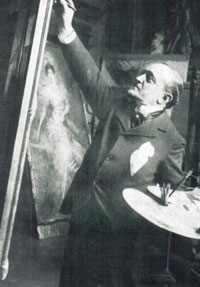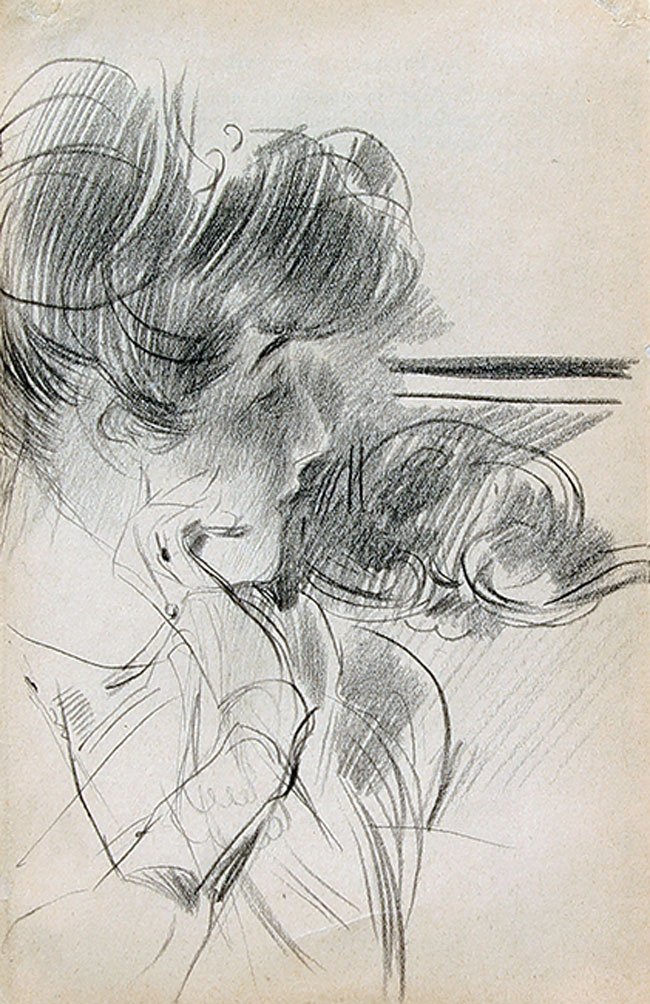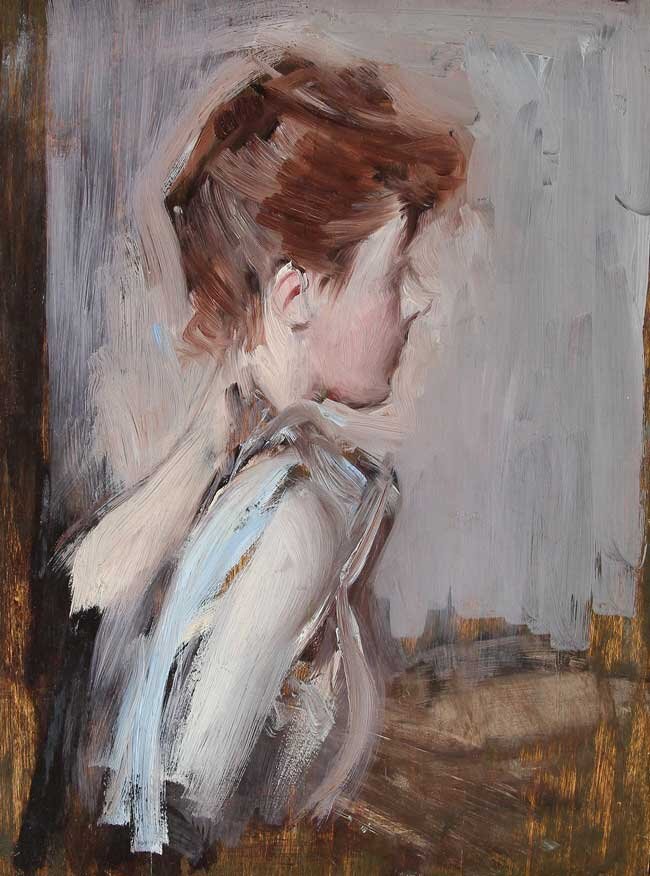GIOVANNI BOLDINI PAINTINGS FOR SALE & BIOGRAPHY
GIOVANNI BOLDINI
Italian, 1842-1931
BIOGRAPHY
"As eighth in a family of thirteen children and the offspring of a painter father who spent most of his life copying Giotto, Guardi and Mantegna, Giovanni Boldini was familiar from a very early age with a style of painting for which he would later demonstrate considerable aptitude. In a preface to the Boldini retrospective at the Musée Jacquemart-André in 1963, Jean-Louis Vaudoyer succinctly pinpointed the importance and the limitations of a body of work that enjoyed extraordinary success in its day, noting simply that 'Boldini was an artist who painted for a certain society at a certain point in time'. Boldini moved 'in the right circles' and was totally at ease in an environment that he viewed as fashionable, chic and 'up-market'.Boldini was living in Ferrara and working out of his father's studio at the time he painted his first self-portrait in 1858. By 1860, he had already acquired a certain local fame and was painting portraits of leading figures in Ferrara. At the time, Boldini's principal influence appears to have been the work of the Swedish painter Anders Leonard Zorn. Boldini also paid lip-service to the fashion for genre themes, painting stylish interiors or costumed figures playing the flute or harpsichord and sipping vintage wine. In 1862, he left Ferrara for Florence, where he spent some time at the fine arts academy before deciding against formal instruction. As Emilia Cardona records in her Life of Jean Boldini (Vie de Jean Boldini), he spent some of his time in Florence in the Café Michelangelo, mingling with the Macchiaioli, the Florentine tachiste 'Impressionists'; it was there that he made the acquaintance of Signorini. On the other hand, notes Cardona, Boldini preferred to spend substantially more time in the Café Donnay, the mecca of Florentine high society.
By this time, Giovanni Boldini was a dandy of the first order and Florence (although the capital of Italy at the time) did not seem sophisticated enough for him: Paris beckoned, and he duly left for the French capital in 1869 in the company of Sir Walter Falconer and his family. On the way to Paris, the group stopped over in Monte Carlo, where Boldini painted a Portrait of a Spanish General. The following year, Sir George Cornwallis-West invited him to London, where he was received enthusiastically and where he painted the portraits of Whistler and the Duchess of Marlborough. Despite the reception he had been given in London, Boldini decided to return to Paris and to settle there from 1871, staying first in the Pigalle district and, later, in the private mansion recently vacated by his fellow portraitist and socialite John Singer Sargent. News of Boldini's runaway success in London had reached Paris, and he was soon acclaimed as the preferred painter of Paris society. His Verdi (subsequently bequeathed to the Gallery of Modern Art in Rome) was painted around this time (1874), as was his portrait of Gabrielle de Rasty.
Boldini's career peaked around the turn of the century. In 1901, he sent canvases to the Venice Biennale and exhibited with extraordinary success at the Paris Salon of that same year; his fame would not desert him until his death in 1931, two years after marrying Italian journalist Emilia Cardona. (Several years after Boldini's death, his widow discovered one of his earliest works, in the form of frescoes painted for the Villa Falconiera near Pistoia; she promptly purchased the villa and transformed it into a small Boldini museum.)
In retrospect, Giovanni Boldini's work seems to run counter to every trend in contemporary art at the time. Nevertheless, his reputation as the portraitist par excellence of the 'Belle Epoque' is sustained by his astonishing virtuosity. As Jean-Louis Vaudoyer has pointed out, Boldini had not the remotest interest in the 'inner life' of his female subjects in particular; for him, they were little more (if anything) than 'large blooms to be desired and collected'. A particular merit of Boldini's work, however, is its spontaneity of attitude and gesture, although we now know that this 'spontaneity' was calculated and the result of entire series of preparatory sketches and studies which preceded his apparent dexterity and 'on-the-spot' inspiration. Less than half a century after his death, Boldini's painting was already being viewed as a last flourish of the 19th century rather than as an explosive precursor of the 20th. For all that, one must admire the skill and dexterity that underpinned an undoubted talent" (Benezit, Dictionary of Artists, Gründ, 2006).
Museum Collections:
Clark Art Institute, Williamstown, MA
Fine Arts Museums, San Francisco, CA
Galleria Civica d’Arte Moderna, Turin
Galleria degli Uffizi, Florence
Galleria Nazionale d’Arte Moderna e Contemporanea, Rome
Gallerie di Palazzo Leoni Montanari, Vicenza
Harvard University Museums, Cambridge, MA
Musée Carnavalet, Paris
Musée d’Orsay, Paris
Musée des Beaux-Arts, Bordeaux
Museo National de Bellas Artes, Buenos Aires
Museu de Arte, Sao Paulo, Brazil
National Gallery of Australia, Canberra
National Gallery, London
Norton Simon Museum, Pasadena, CA
Philadelphia Museum of Art, PA
Mark Murray Fine Paintings is a New York gallery specializing in buying and selling 19th century and early 20th century artwork.
Please contact us if you are interested in selling your Giovanni Boldini paintings or other artwork from the 19th century and early 20th century.
GIOVANNI BOLDINI
Paintings for sale
Giovanni Boldini Paintings Previously Sold
GIOVANNI BOLDINI
Portrait of the Countess de Leusse
Oil on cradled panel
13¾ x 10¼ inches (35 x 26.8 cm)
SOLD
GIOVANNI BOLDINI
Venezia
Oil on panel
10½ x 13¾ inches (27 x 35 cm)
SOLD




